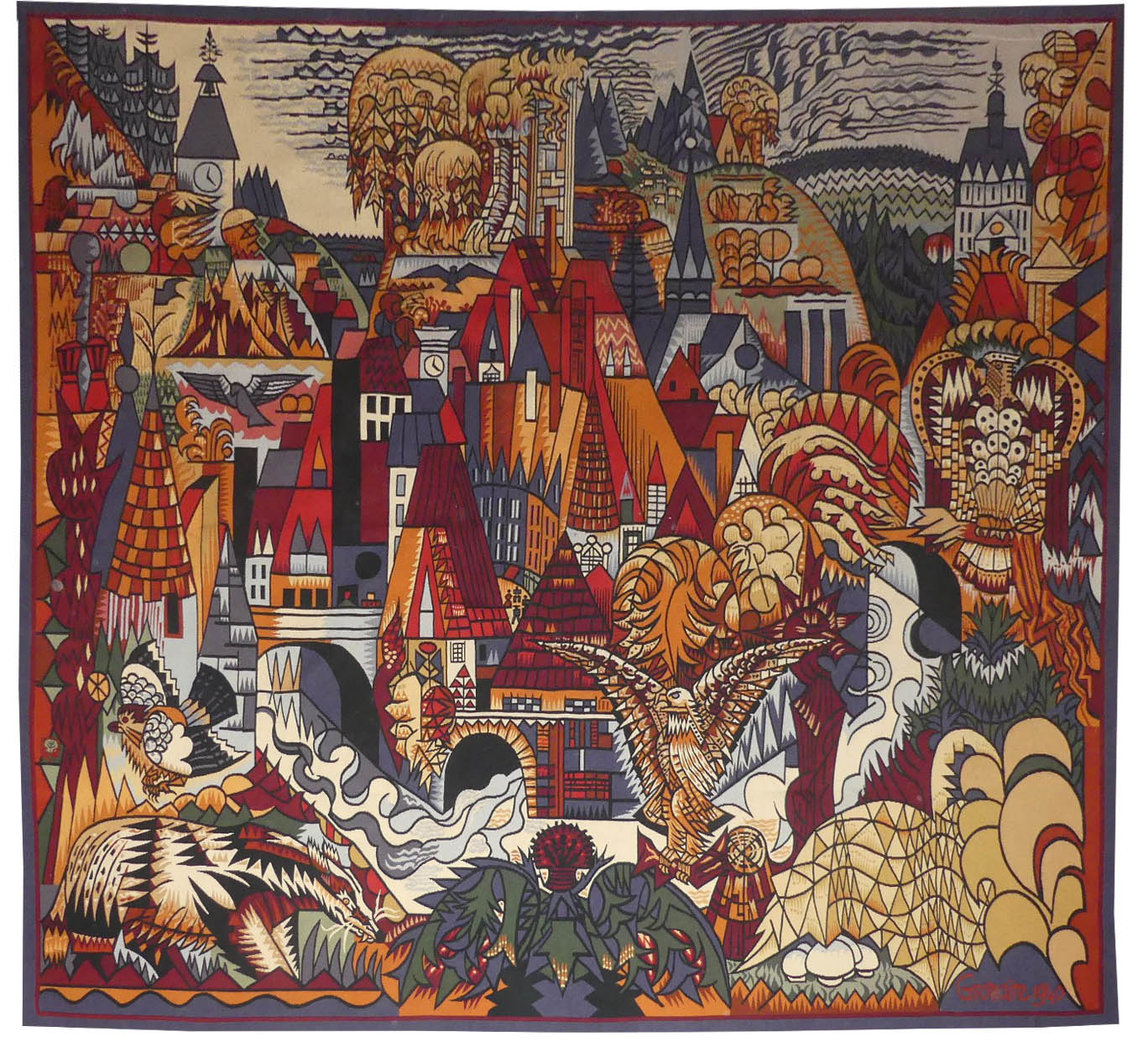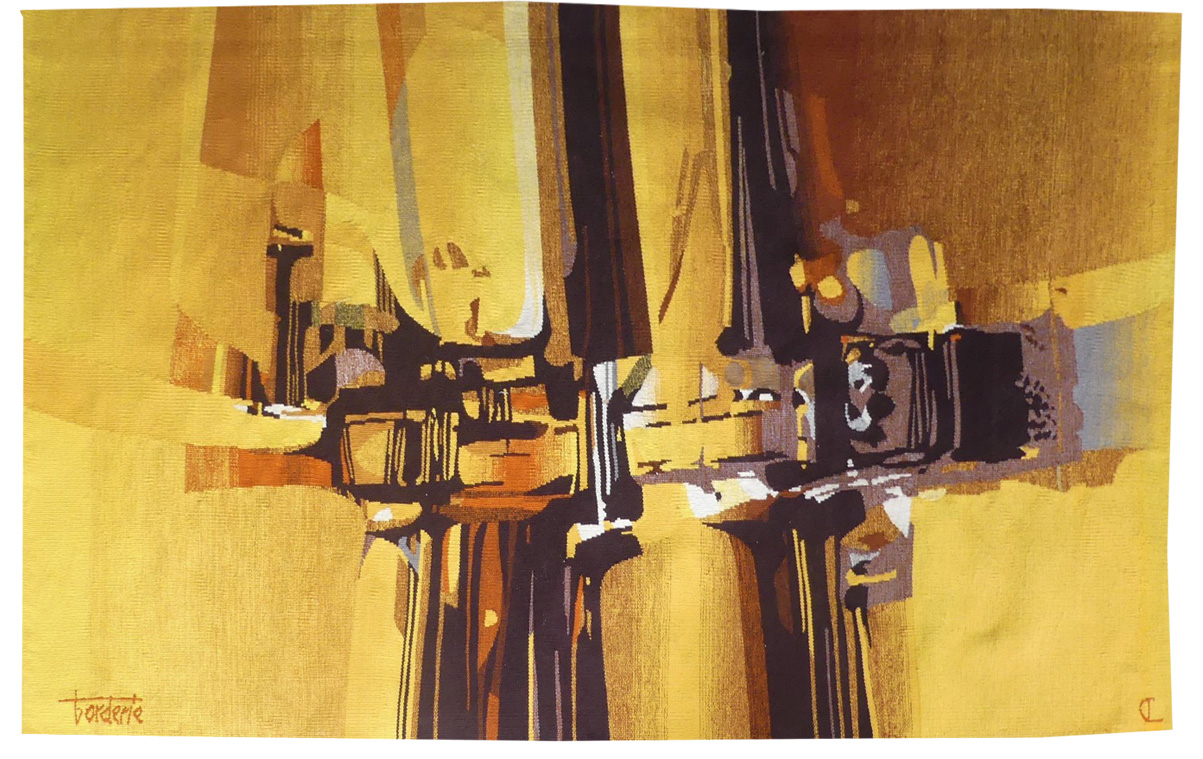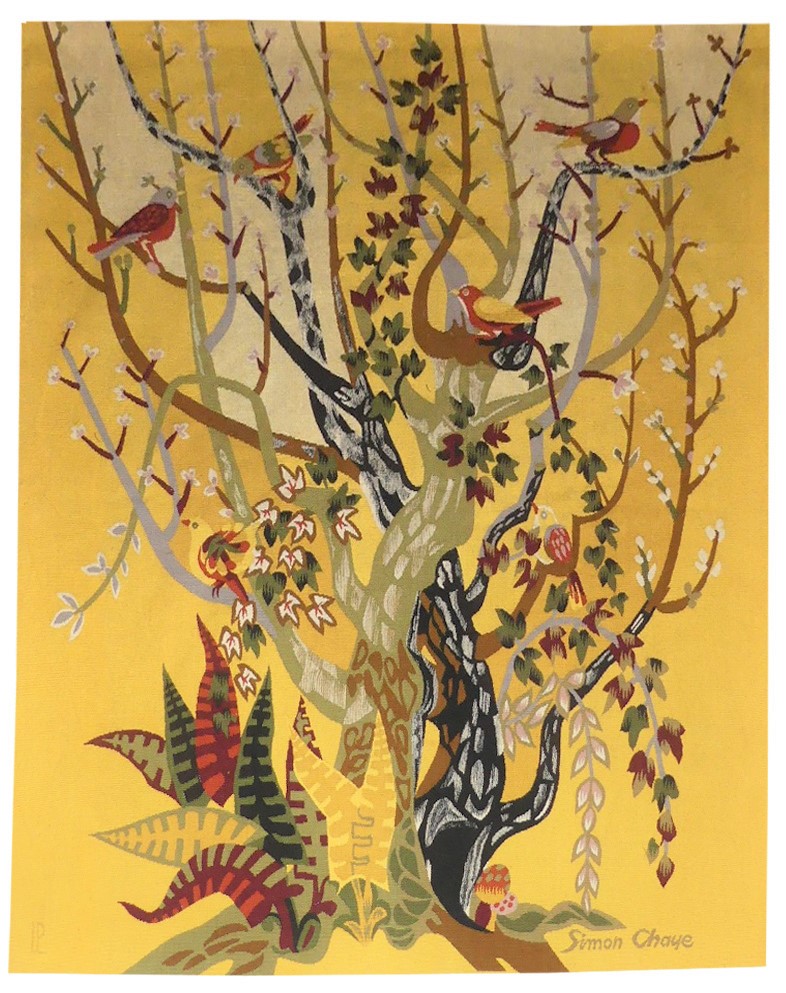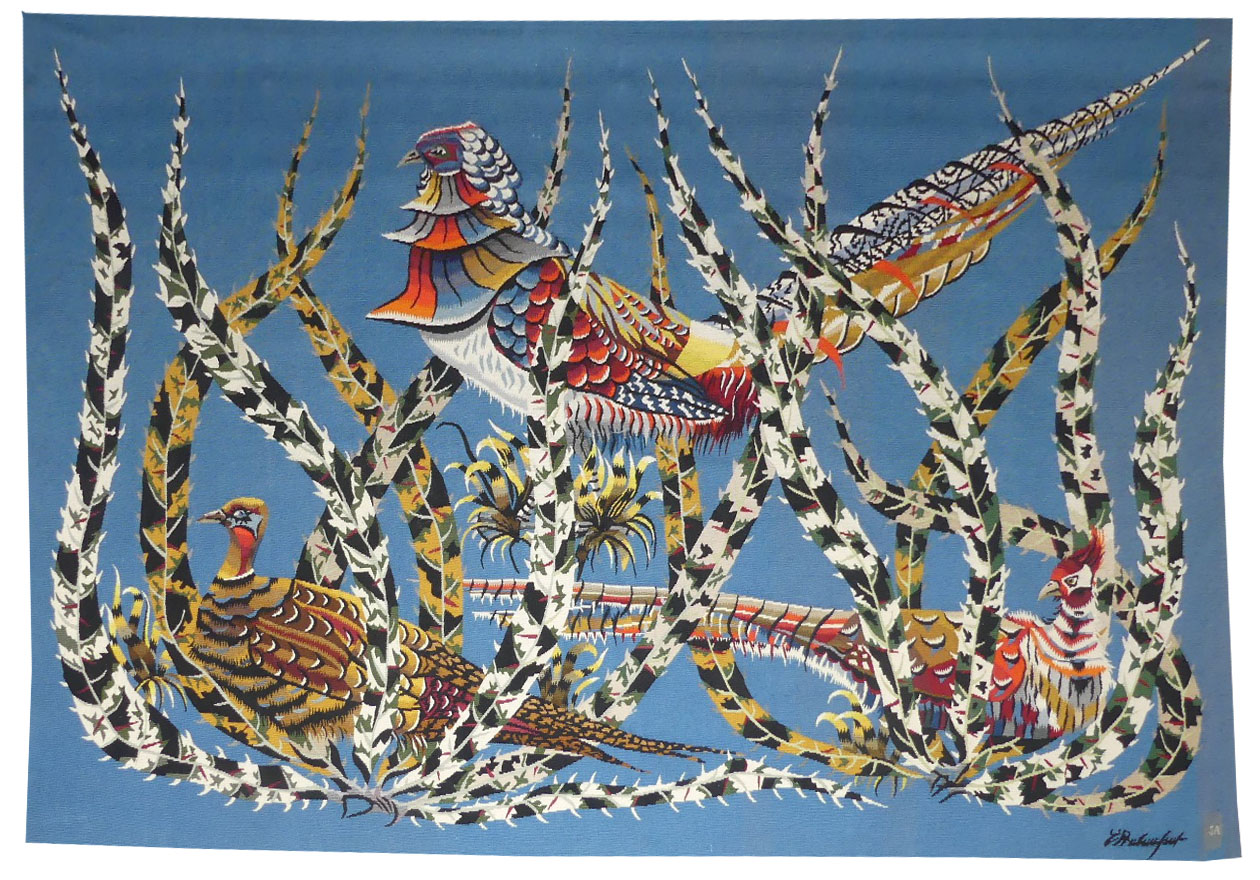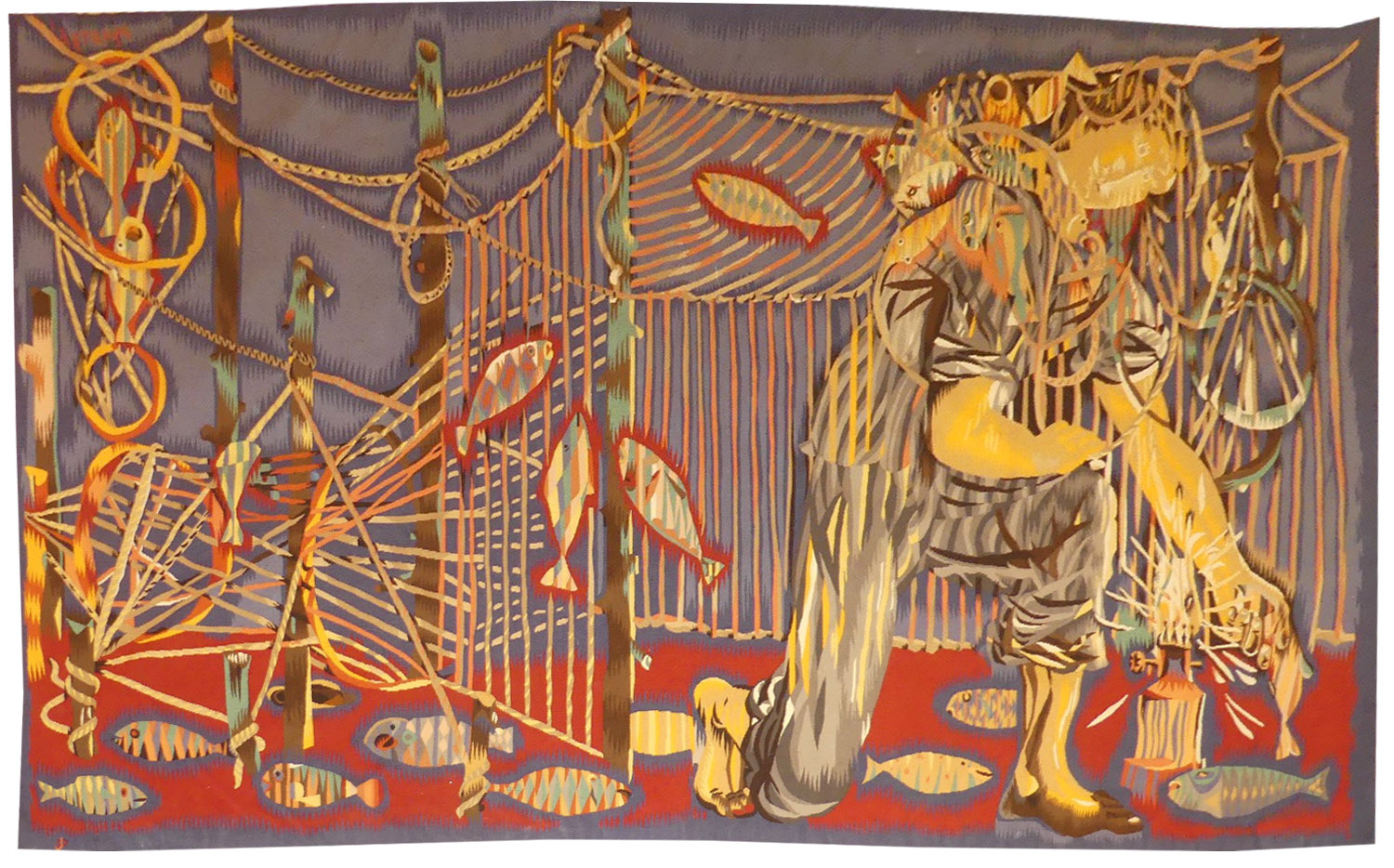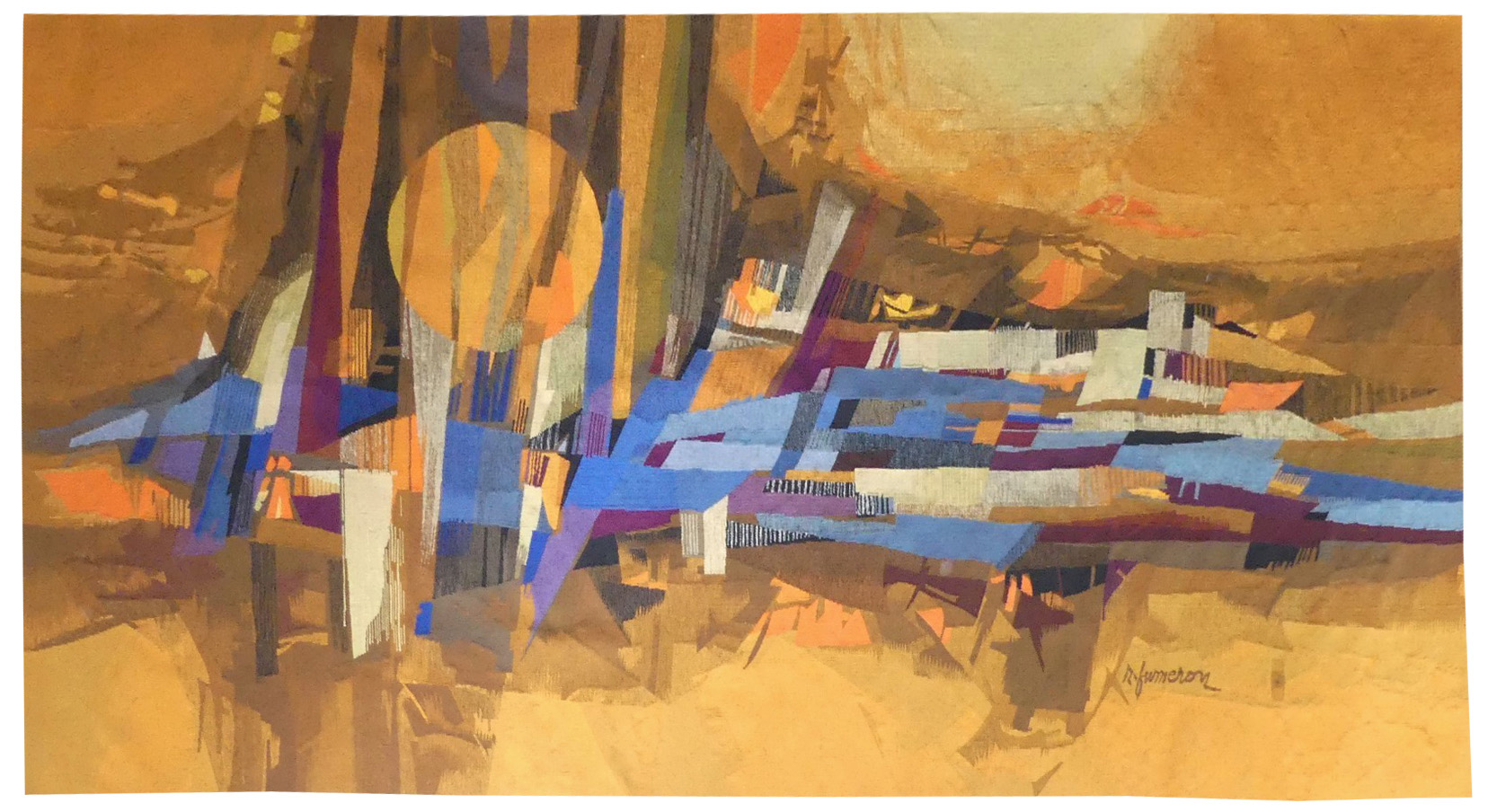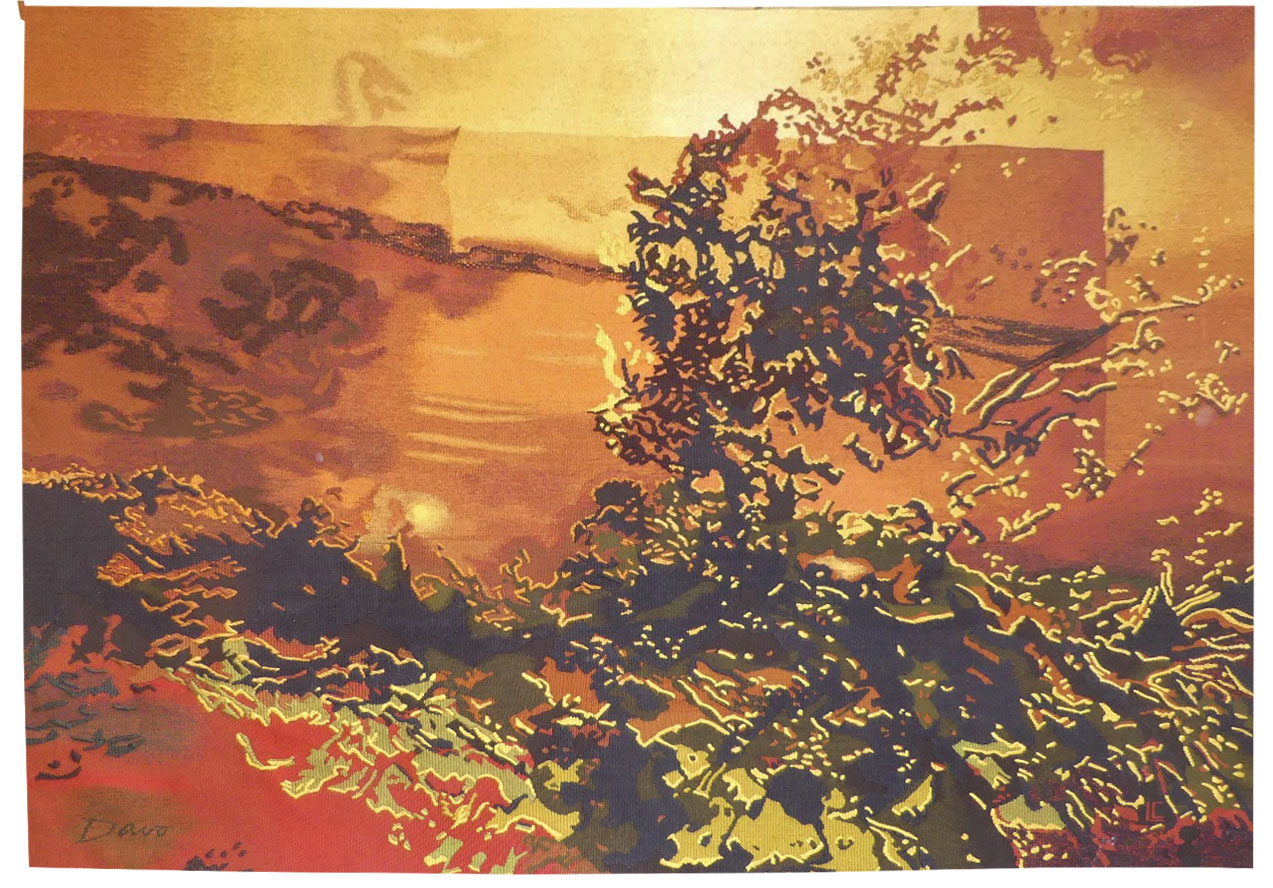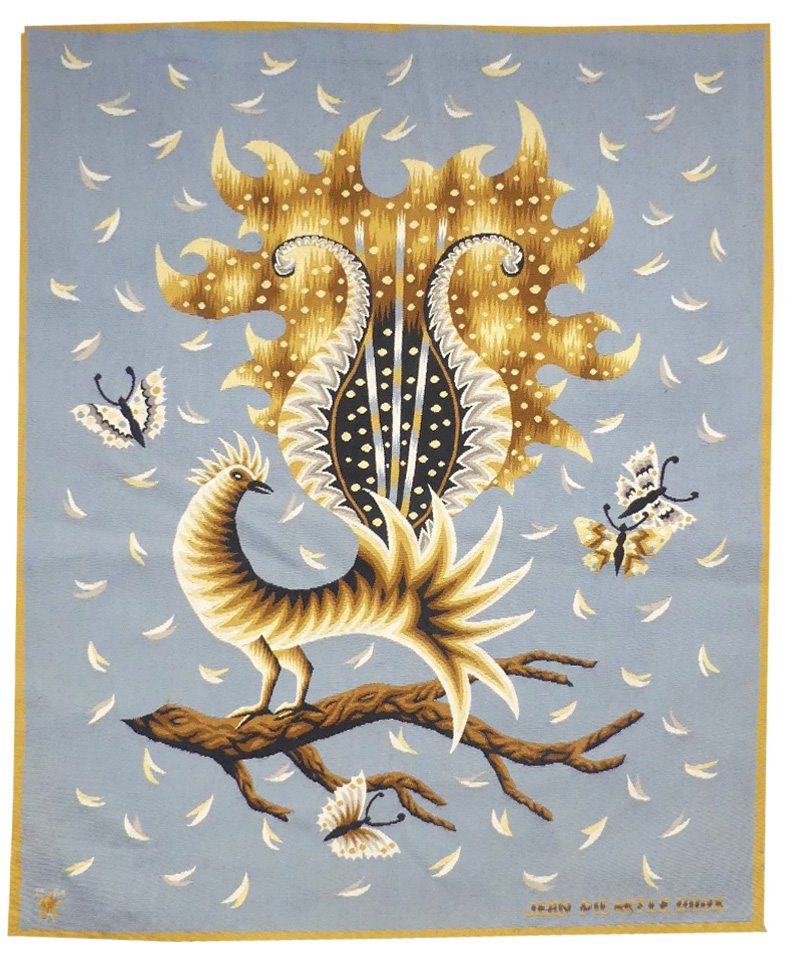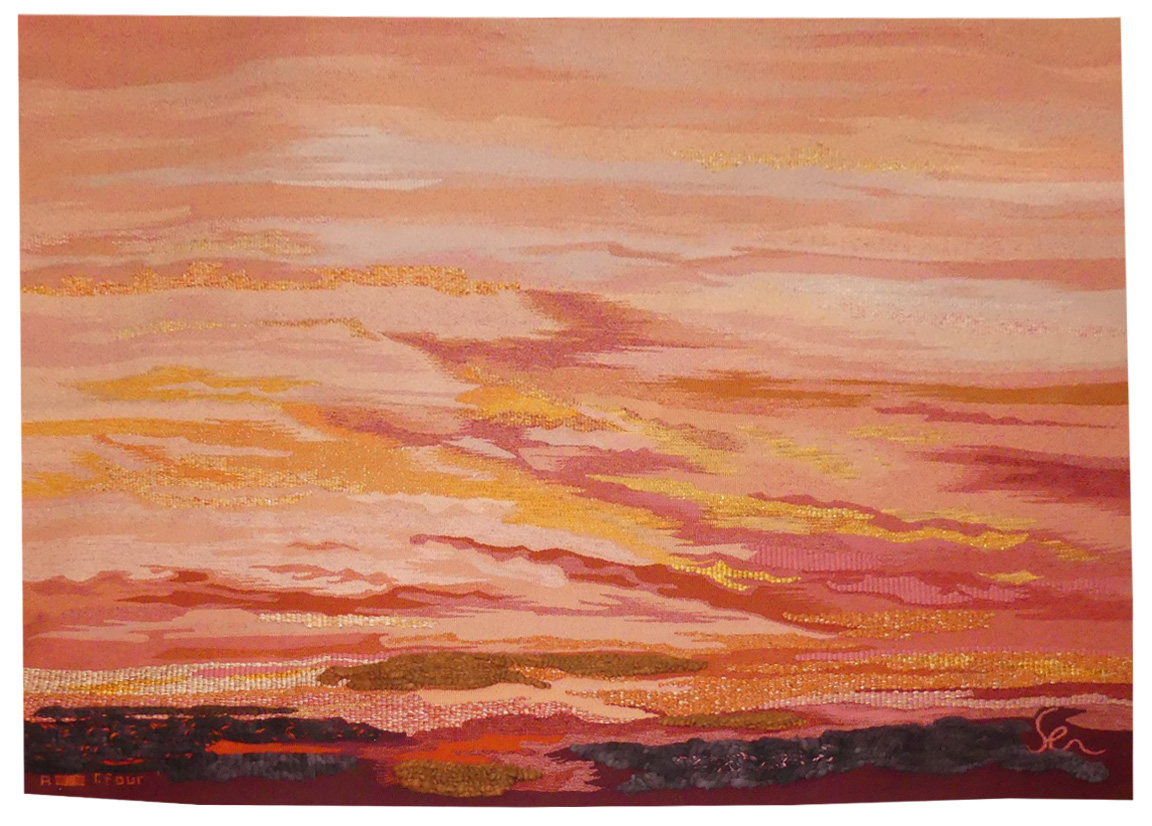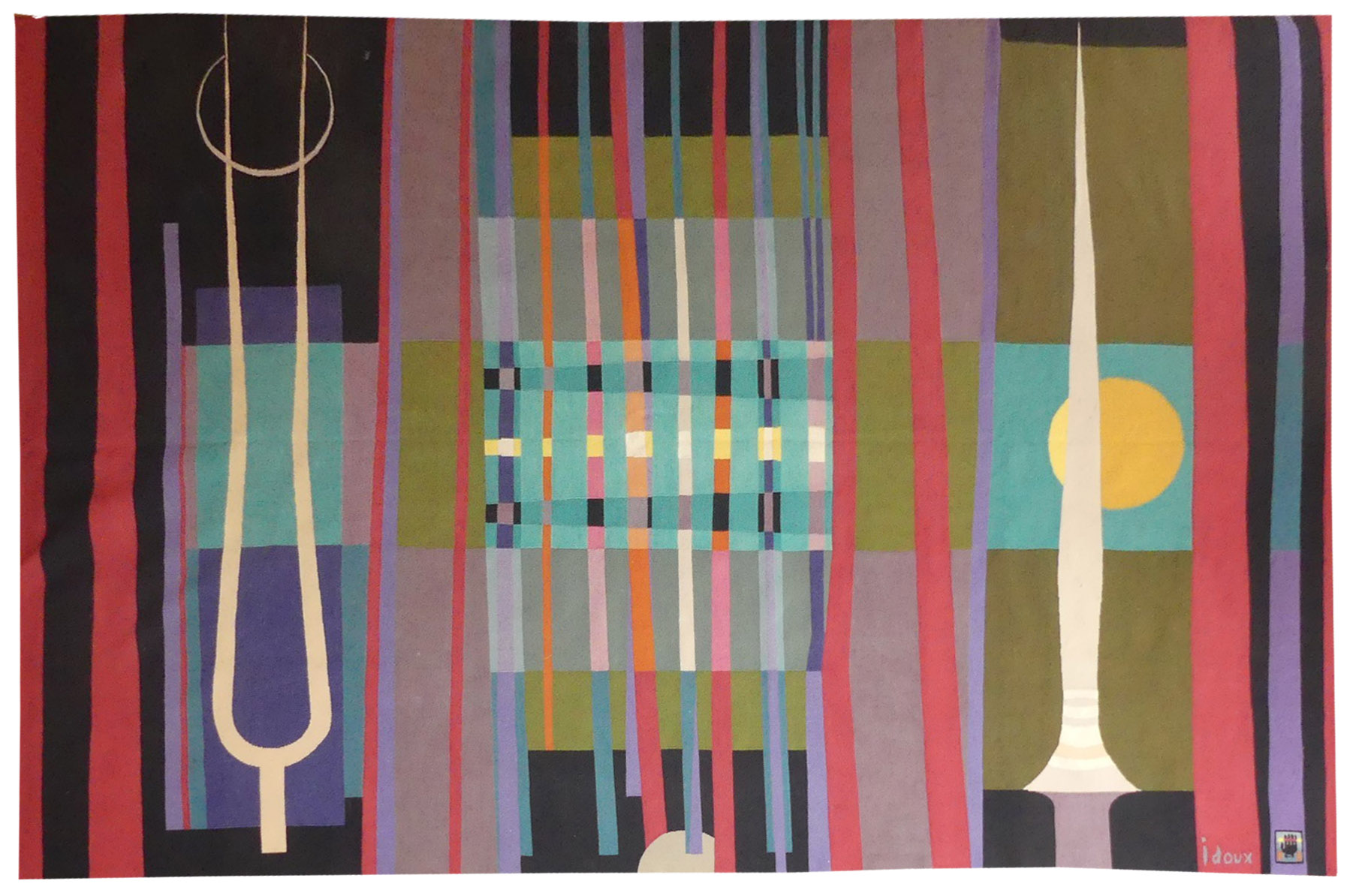Aubusson
Aubusson tapestry woven in the Goubely workshop.
1940.
Gromaire’s woven pieces are few in number : 11 cartoons, designed between 1938 and 1944, most of them in Aubusson. “His rigorous construction, his use of simplification, his penchant for grand composition and grand fundamental ideas, his knowledgeable use of colour and in sum his supreme quality as a master-craftsman, all of those things were to make of him one of the most expert tapestry artists of his time”, so wrote Jean Cassou (Exhibition catalogue, Marcel Gromaire, Paris, Musée Nationale d’art moderne, 1963).
It was Guillaume Janneau, then in the chair of the Mobilier National, who contacted him in 1938, convinced that his style (simplification of shape, geometrical designs framed in black, influenced by cubism, limited colour schemes…) would have something to contribute to the resolution of the new aesthetic problems that the art of tapestry would have to confront in order to bring about its renewal (simplified palette, synthetic cartoon design...) firstly with a commission for a work on the theme of the four elements, then with a second (“les saisons”, the seasons) which would be produced at Aubusson. In 1940 Gromaire joined Lurçat and Dubreuil there. Working alone, with great meticulosity (numerous drawings anticipate the cartoon which is painted rather than numbered as with Lurçat), in close collaboration with Suzanne Goubely, who would weave all his cartoons, he spent 4 years in Aubusson, during which time he devoted all his creative energy to tapestry. At the end of the war, he left the Creuse and produced no more cartoons, leaving to Lurçat the position of grand initiator of the tapestry renewal movement.
« Aubusson » is one of the 5 tapestry cartoons that Gromaire designed for the Goubely workshop during the War, and it is emblematic of his « stained glass window » style, busy and geometric. And even if one recognises some of the emblematic features of Aubusson (the clock tower, the church of Sainte Croix...), which Gromaire was coming to know at the time, the town appears to be squeezed in by the rugged natural features that surround it (to which the artist was particularly attracted as can be seen from the many drawings made at this time) steep cliffs and rushing rivers and streams.
Interestingly, a copy of this cartoon, woven later in 1960, was displayed in the ocean liner “France”, the only tapestry whose conception predated the commission for the decorative hangings ; what better symbol could there be as a medium (tapestry) and a subject (France’s own landscape) both vectors of tradition, to portray the modernity of French style (Bruno Foucart), and the liner “France” herself.
Bibliography :
Tapisseries contemporaines Lurçat Gromaire, éditions Braun et cie, 1943, ill.
Le Point, Aubusson et la renaissance de la Tapisserie, mars 1946, ill.
Formes et couleurs, n°5-6, 1942, ill.
L’amour de l’art, la tapisserie Française, 1946, ill. p.185
Jean Lurçat, Tapisserie française, Bordas, 1947
J. Cassou, M. Damain, R. Moutard-Uldry, la tapisserie française et les peintres cartonniers, Tel, 1957
Symposium Jean Lurçat et la renaissance de la tapisserie in Aubusson, Aubusson, Musée départemental de la tapisserie 1992
Exhibition catalogue Jean Lurçat, compagnons de route et passants considérables, Eglise de Felletin, 1992, ill. p. 25 (and detail on front cover)
Exhibition catalogue, Gromaire, œuvre tissée, Aubusson, Musée de la tapisserie, 1995, ill. p. 53 (and on front cover)
Exhibition catalogue La manufacture des Gobelins dans la première moitié du XXe siècle, Beauvais, Galerie nationale de la tapisserie, 1999
Armelle Bouchet Mazas, le paquebot France, Paris, 2006, ill. p.67
Aubusson, Cité internationale de la tapisserie, guide du visiteur, 2016, ill.p.57


